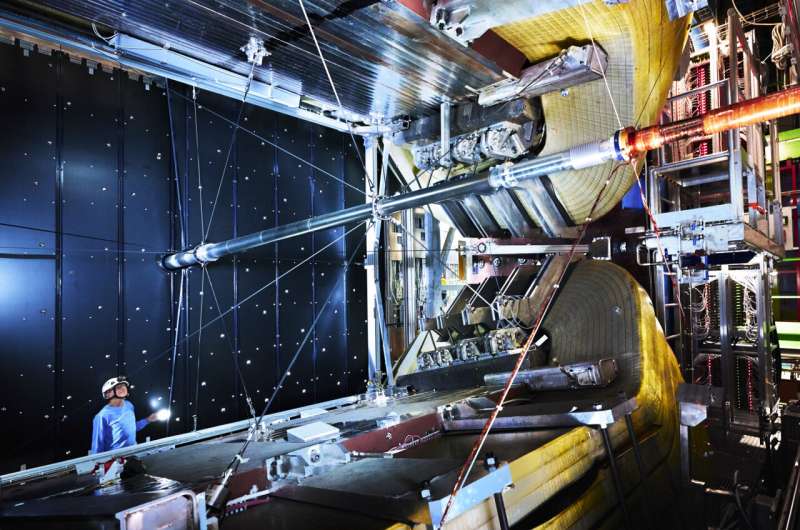This article has been reviewed according to Science X's editorial process and policies. Editors have highlighted the following attributes while ensuring the content's credibility:
fact-checked
preprint
trusted source
proofread
LHCb observes a new decay mode of the charmed beauty meson

The LHCb collaboration recently reported on the arXiv preprint server the first observation of the decay of the Bc+ meson (composed of two heavy quarks, b and c) into a J/ψ charm-anticharm quark bound state and a pair of pions, π+π0. The decay process shows a contribution from an intermediate particle, a ρ+ meson that forms for a brief moment and then decays into the π+π0 pair.
The Bc+ is the heaviest meson that can only decay through the weak interactions, via the decay of one heavy constituent quark. Bc+ decays into an odd number of light hadrons and a J/ψ (or other charm-anticharm quark bound states, called "charmonia") have been studied intensively and have been found to be in remarkable agreement with the theoretical expectations.
The decay of Bc+ into a J/ψ and a π+π0 pair is the simplest decay into charmonium and an even number of light hadrons. It has never been observed before, mainly because the precise reconstruction of the low-energy π0 meson through its decay into a pair of photons is very challenging in an LHC proton-proton collision environment.
A precise measurement of the Bc+→J/ψπ+π0 decay will allow better understanding of its possible contribution as a background source for the study of other decays of Bc mesons as well as rare decays of B0 mesons. From the theoretical point of view, decays of Bc into J/ψ and an even number of pions are closely related to the decays of the τ lepton into an even number of pions, and to the e+e– annihilation into an even number of pions.
Precise measurements of e+e– annihilation into two pions in the ρ mass region (as in the Bc decay discussed here) are crucial for the interpretation of results from the Fermilab g-2 experiment measuring the anomalous magnetic dipole moment of the muon, since low-energy e+e– annihilation into hadrons is an important source of the uncertainty of the g-2 measurements.
The ratio of the probability of the new decay to that of the decay of Bc+ into J/ψπ+ has been calculated by various theorists over the last 30 years. Now these predictions can finally be compared with an experimental measurement: most predictions agree with the new result obtained by LHCb (2.80±0.15±0.11±0.16).
The large number of b-quarks produced in LHC collisions and the excellent detector allows LHCb to study the production, decays and other properties of the Bc+ meson in detail. Since the meson's discovery by the CDF experiment at the Tevatron collider, 18 new Bc+ decays have been observed (with more than five standard deviations), all of them by LHCb.
More information: Observation of the Bc+ to J/ψπ+π0 decay, arXiv (2024). DOI: 10.48550/arxiv.2402.05523
Journal information: arXiv
Provided by CERN





















